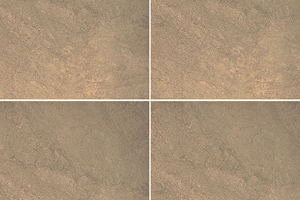How Ceramic Manufacturers Set Color Standards
Ceramic manufacturers work with suppliers to ensure raw materials meet tight specifications especially in relation to ceramic tile color matching. Manufacturers set quality standards and grades for their suppliers using color measurement instruments and tri-stimulus values using a color space, such as CIE L*a*b*. Taking accurate color measurements is critical to both the manufacturer and supplier as raw material prices are set based on a material’s color classification.
Determining the quality of raw materials requires creating ceramic bisques (this means it has been fired but not glazed) from the raw material samples. The bisques are then sent to the lab for physical analysis and sorted according to their lightness (L*) and yellowness (b*) values. Color shade is one of the primary indicators used in classifying ceramic tile quality. Shade difference among ceramic tile is inevitable. Almost every ceramic tile has some degree of shade variation going from a uniform appearance to dramatic variation. Using shade classification systems to define and sort tiles into different groups can help solve issues caused by shade variation. Using shade classification systems to define and sort tiles into different groups can help solve issues caused by shade variation. When developing a shade classification system, a standard value (using L*a*b*) is established for each shade group. To determine which group the ceramic tiles fall under, they are measured.
The Konica Minolta Sensing Spectrophotometer CM-26dG can measure the ceramic bisques based on their CIE L*a*b* values. With high repeatability of σ∆E*ab 0.04 and good inter-instrument agreement of ∆E*ab< 0.12 (average of BCRA 12 Tiles), the Konica Minolta Sensing Spectrophotometer CM-26dG ensures measurement result remains consistent even between multiple units.
By ensuring the raw materials are consistent prior to firing the materials increases the chances of consistency after. There are still factors that can then impact color such as the temperature and atmosphere of the kiln and the composition of the glaze. The end product would also need to be tested to define the level of color variation.











